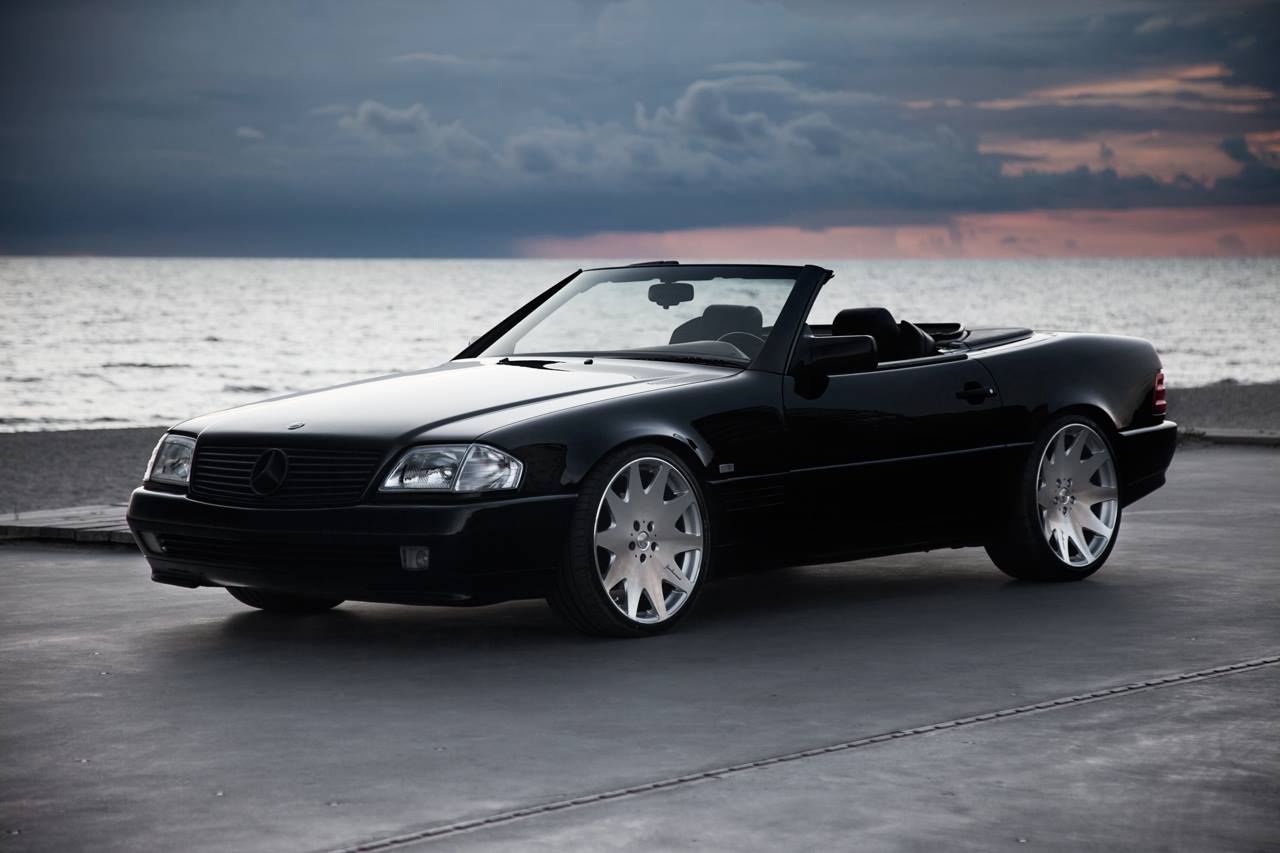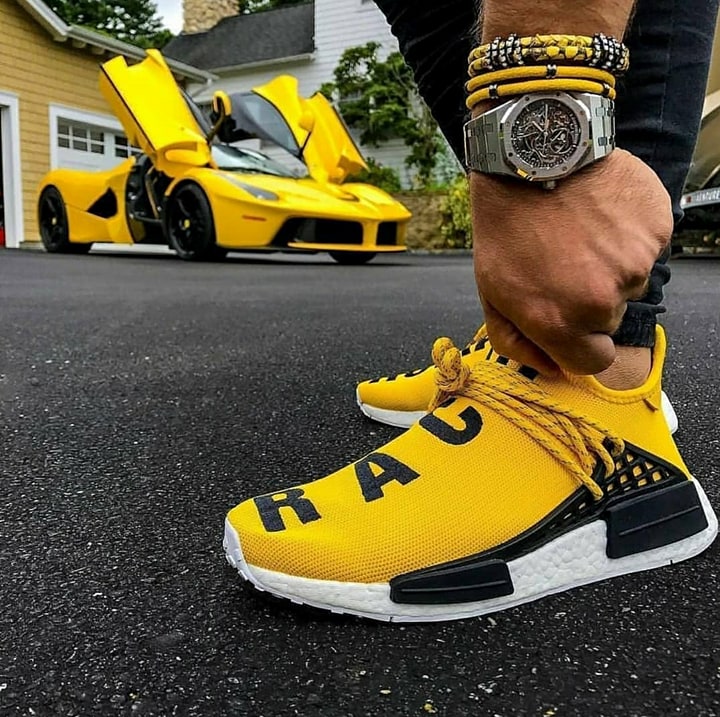Jag har ett liknande inlägg som nu säkert är 10 år och 10 modeller gammalt, så tills jag orkar uppdatera det så klistrar jag bara rakt in här från Sneakerfreaker.com
https://www.sneakerfreaker.com/features/air-jordan-signature-model-guide
Air Jordan 1 (1985-86)
The AJ1 (officially) started the Air Jordan line. Arguably the most popular retro model in the series, with countless colourways, collaborations and remakes.
Air Jordan 2 (1986-87)
Nike removed the Swoosh from the AJ2 to delineate the Jordan series. It was originally made in Italy and boasted an unprecedented $100 price tag in 1986.
Air Jordan 3 (1988)
Michael Jordan supposedly almost left Nike after the AJ2, but Tinker Hatfield came on board and created the AJ3 with visible Air and elephant print, saving the franchise.
Air Jordan 4 (1989)
The AJ4 took flight during ‘The Shot’ in 1989. It was also the base for the very first Jordan collaboration ever with Undefeated, making one of the rarest pairs ever.
Air Jordan 5 (1990)
Hatfield brought flash to the AJ5 via its reflective tongue. Its midsole ‘teeth’ are said to be modelled off of WW2 fighter planes, specifically the P-51 Mustang.
Air Jordan 6 (1991)
Michael Jordan clinched his first NBA title with the AJ6 on-foot. Celebrities love the model too, and so does the Slam Dunk anime.
Air Jordan 7 (1992)
MJ struck Olympic gold at Barcelona 1992 and won his second consecutive NBA ring in the AJ7. This Hatfield design added a Huarache-style inner bootie.
Air Jordan 8 (1993)
The AJ8 features distinct crossed straps for extra lockdown – it worked, as MJ won his third ring in them.
Air Jordan 9 (1993-94)
A new generation of talent rocked the AJ9 on court during MJ’s first retirement. His statue in front of the United Center depicts him wearing the shoes.
Air Jordan 10 (1994-95)
MJ returned to the NBA wearing the AJ10. One of its earliest iterations featured an additional toe cap panel – which he hated.
Air Jordan 11 (1995-96)
Voted by SF readers as the greatest basketball shoe of the 1990s, the AJ11’s patent mudguard and ice soles still glisten to this day.
Air Jordan 12 (1996-97)
The AJ12 was officially the first signature shoe under the newly formed Jordan Brand in 1997. It was also the first Jordan to use Zoom Air.
Air Jordan 13 (1997-98)
Besides a famous appearance in He Got Game, the AJ13 tapped into MJ’s other nickname of the ‘Black Cat’.
Air Jordan 14 (1998-99)
Inspired by a famous Italian sports car make, the AJ14 was fast and furious. MJ wore them during ‘The Last Shot’, clinching his sixth NBA ring and cementing his GOAT status.
Air Jordan 15 (1999-2000)
The second round of post-retirement Jordans began with the AJ15, which was supposedly modelled on MJ’s tongue-out antics. Tinker Hatfield regrettably says it’s his worst Jordan design.
Air Jordan 16 (2001)
Wilson Smith III took over designing signature Jordans from the AJ16. The model’s most unique feature is its magnetic shroud.
Air Jordan 17 (2002)
MJ’s second NBA comeback introduced the AJ17, which was packed with Tuned Air and came in a metal briefcase – making it the most expensive Jordan at the time.
Air Jordan 18 (2003)
The AJ18 was the final shoe MJ played professionally in. Its luxurious suede and carbon fibre build was again inspired by speedy sports cars.
Air Jordan 19 (2004)
The first signature model following MJ’s second retirement emphasised a need for speed with its sleek woven instep and Zoom Air cushioning. Covered lacing was continued from previous models.
Air Jordan 20 (2005)
No other signature series had reached 20 continuous years, so the AJ20 celebrated with laser detailing. Hatfield’s return also introduced the unique free-floating strap and IPS cushioning.
Air Jordan 21 (2006)
D’Wayne Edwards created the AJ21 with premium leather and quilted details, plus an ‘Independent Podular System’ that used Zoom and Encapsulated Air pods. Its TV ad was also legendary.
Air Jordan 22 (2007)
Edwards continued the IPS system on the AJ22, then modelled its upper on stealth fighter planes. It was also the first basketball shoe to use a titanium sole shank.
Air Jordan 23 (2008)
Hatfield came back to mark the 23rd edition of the Air Jordan line. Besides the design’s distilled Jordan DNA, it was also ‘the first ever sustainable basketball shoe’.
Air Jordan 2009 (2009)
The signature Air Jordan line adopted year numbers after the 23 to mark its annual succession. This model took cues from the AJ16 while also expressing the Nike Considered eco ethos.
Air Jordan 2010 (2010)
2010 marked 25 years of the MJ-Nike partnership and also the 23rd anniversary of Jordan Brand. The AJ2010 had a clear TPU midfoot window – probably one of the series’ most peculiar features ever.
Air Jordan 2011 (2011)
The Jordan series progressed into the 2010s with the AJ2011, which bore a conspicuous resemblance to the AJ11. It had interchangeable ‘Quick’ and ‘Explosive’ insoles containing different Air systems.
Air Jordan 2012 (2012)
Modularity was continued on the AJ2012. It featured interchangeable booties for low- and high-cut ankle support, plus three different insole options.
Air Jordan 28 (2013)
The AJ28 brought back the sequential numbering system, and continued its radical aesthetic via an ankle-hugging zippered cover. New JB signing Russell Westbrook championed the model.
Air Jordan 29 (2014)
Touted as ‘the world’s first woven basketball shoe’, the lightweight and flexible AJ29 refined the Flight Plate midsole system for even more explosive play styles.
Air Jordan 30 (2015)
Hatfield celebrated 30 years of Jordan by looking to the future, choosing to omit archival references on the AJ30. Instead, the cosmic inspiration nodded to MJ’s boundless talent.
Air Jordan 31 (2016)
Tate Kuerbis progressed the AJ31 with Flyweave uppers and FlightSpeed cushioning. It was also the first time a Swoosh, Jumpman and Wings logo appeared on a single shoe.
Air Jordan 32 (2017)
While the cues from the AJ2 are obvious on the AJ32, this modern iteration uses 21st century technology for maximum performance. Flyknit and FlightSpeed come standard.
Air Jordan 33 (2018)
Like its predecessor, the AJ33 references its senior from 30 years prior. The most dramatic addition to this model is its laceless FastFit system for easy adjustment.
Air Jordan 34 (2019)
The AJ34 reprised the Flight status espoused by the AJ4 by being one of the lightest Jordans ever. It cut weight with its Eclipse Plate and Zoom Air cushioning.
Air Jordan 35 (2020)
Things got even lighter on the AJ35, a direct evolution of the AJ34. The updated Eclipse Plate 2.0 plus forefoot and heel Zoom units met heritage nods via the AJ5-style tongue.
Air Jordan 36 (2021)
Nike’s Zoom Air Strobel system sits at the core of the AJ36, delivering full-length cushioning and maximum responsiveness. It’s been one of the most popular modern Jordans.
Air Jordan 37 (2022)
The AJ37 is perfected for jumping. Zoom Air Strobels, Formula 23 foam and carbon fibre shanks are designed for takeoff and landing.
Air Jordan 38 (2023)
The AJ38’s new forefoot X-Plate keeps the foot located over the full-length Zoom Strobel and Cushlon 3.0 midsole. It is also reportedly the most sustainable Air Jordan yet, using at least 20 per cent recycled material by weight.


